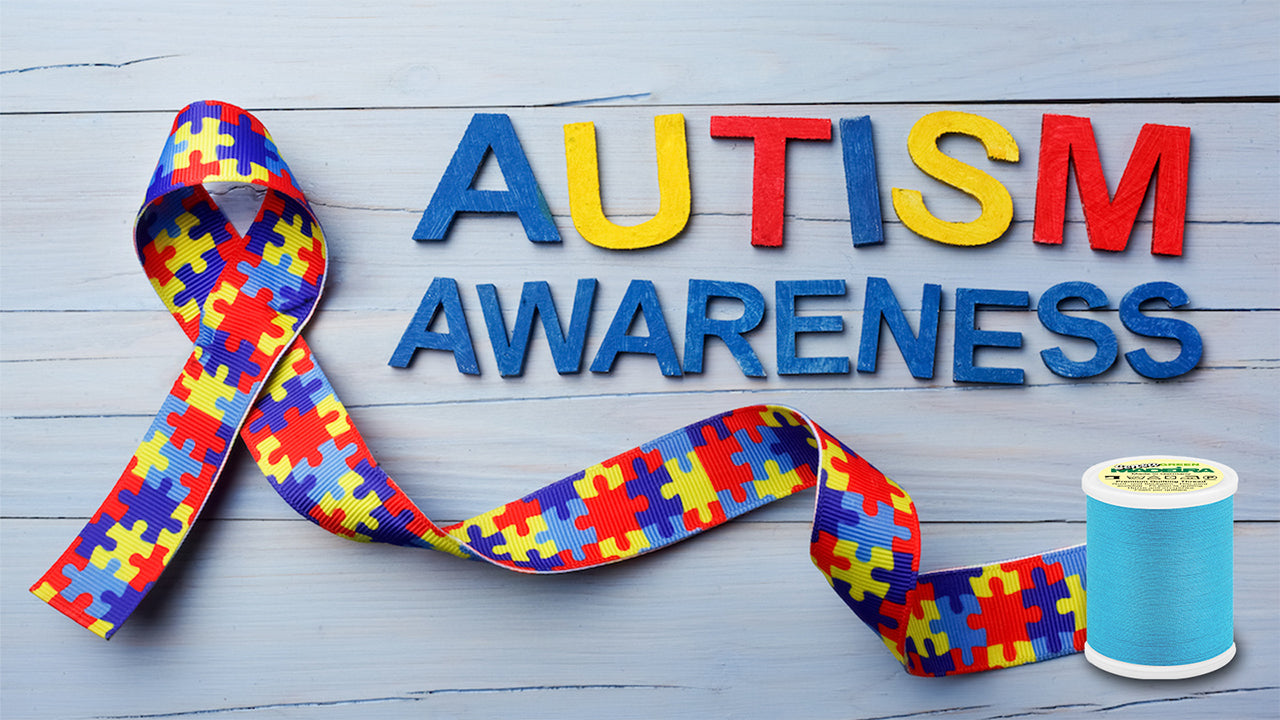Have you ever made a quilt that felt like a hug?
Not just warm — but truly comforting, grounding, even healing. That’s what a sensory quilt is. And this April, during Autism Awareness Month, there’s no better time to make one.
Many of us who quilt have been sewing since we were young — maybe your mother taught you, maybe your hands remember the hum of that old Singer machine in your grandmother’s dining room. Quilting, for so many of us, isn’t just a hobby. It’s how we show love.
Now imagine using those same skills to make something that could truly help someone feel safe and calm in a busy, noisy world.
What’s a Sensory Quilt?
A sensory quilt is a small, often lap-sized quilt designed to stimulate the senses. They’re made with a patchwork of different textures and bits of interactive features — zippers, ribbons, pockets, crinkly fabric, even buttons or soft tags.
You may have heard of “fidget quilts” made for people with dementia or Alzheimer’s. Sensory quilts are similar but are especially meaningful for children and adults on the autism spectrum or with sensory processing disorders.
Many individuals with autism experience the world differently — sounds, textures, lights, and even feelings can come through louder, sharper, more intense. Sensory quilts offer a gentle way to self-soothe and focus.
It’s like holding a soft, familiar friend — and sometimes, that’s exactly what someone needs.
What Makes It Special?
You don’t need fancy tools or a whole new stash to make a sensory quilt. You’ve probably got most of what you need right in your sewing room. Here are a few ideas to guide you:
- Mix Up Your Fabrics - Think soft fleece, sturdy denim, smooth satin, bumpy corduroy, or even terry cloth from an old towel. The more variety, the better. Each texture offers a different sensation for the hands.
- Add Little Surprises - Sew in a zipper (those can be oddly satisfying to open and close), or tack down a ribbon to fiddle with. A bit of Velcro or a fabric loop gives the fingers something to play with.
- Use Calming Colors… or Not! - For some, bright and bold patterns are engaging and joyful. For others, softer tones — like sky blue, lavender, or sage green — are more soothing. Trust your instinct, or think about who you’re making it for.
- Keep It Safe - If you’re adding anything like beads or buttons, make sure they’re stitched on tight. Double-stitch any elements that might be pulled or tugged. Safety always comes first, especially if the quilt is for a child.
Think of it as making a quilt that invites exploration — a cozy adventure, stitched with care.
Why It Matters
A sensory quilt isn’t just practical — it’s deeply emotional. For many families with autistic children, small moments of peace can be hard to come by. You might never see the smile when a little one runs their hand over a soft square, or the calm that comes when they unzip and zip and unzip again.
But that comfort? That stillness? You made that possible. With your hands and heart.
It’s not about making something perfect. It’s about creating something meaningful.
Threads That Hold It Together
Now, since we’re working with heavier textures and moving parts, your thread choice matters. You want something that can handle being tugged, washed, and loved.
Our Madeira Quilting and Sewing threads are perfect for this type of tough work. They’re strong, smooth, and they hold up well to frequent use. A few favorites:
- Madeira Cotona Cotton – Lovely for piecing and layering soft fabrics.
- Madeira AeroQuilt – Durable, great for topstitching with flair.
- Madeira Aerofil Polyester – Strong and sturdy for attaching sensory pieces.
Whatever thread you use, just be sure to double back and reinforce the parts that’ll get the most handling. It’s worth the extra few minutes.
A Few Simple Ideas to Get You Started
You don’t need to reinvent the wheel — sometimes the simplest quilts are the most beloved. Here are a few design sparks:
- A rainbow strip quilt — each band a different color and texture.
- A cloud-and-sky theme, with soft plush clouds and a yellow satin sun.
- A travel lap quilt with a few zippered pockets and a loop to attach a toy or keyring.
- A “memory” style quilt, using old clothes or scrap fabrics from loved ones.
Start small if it feels overwhelming. Even a 12”x12” square can be packed with sensory love.
From One Quilter to Another
If you’re anything like me, your hands don’t sit still for long. We make things — not because we have to, but because we love to. And there’s something incredibly special about using that gift for a good cause.
During Autism Awareness Month, consider stitching up a little quilt with a big purpose. You might gift it to a grandchild, donate it to a local autism center, or even drop it off at your church or community group. However you share it, know that you’re doing something that matters.
Want to Share Your Quilt?
We’d love to see what you create. If you’re on Facebook or Instagram, share your sensory quilt using hashtags like: #SensoryQuilt #AutismAwareness #QuiltingForGood
And tag [@QuiltingThread] so we can feature your work and cheer you on. Because what you’re doing — it’s more than sewing. It’s a quiet act of kindness that travels far.



Leave a comment